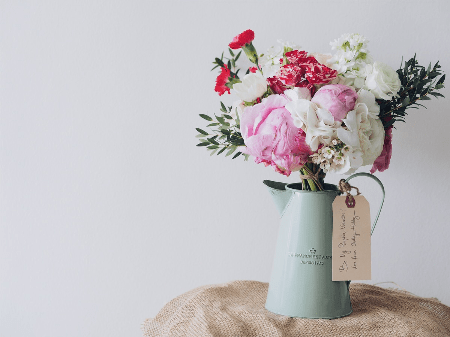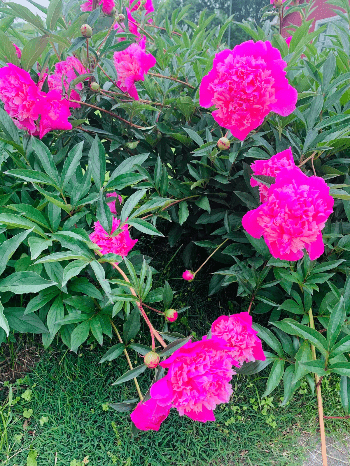Ultimate Home & Garden Guide by Roger Keyserling (free novels to read .txt) 📖

- Author: Roger Keyserling
Book online «Ultimate Home & Garden Guide by Roger Keyserling (free novels to read .txt) 📖». Author Roger Keyserling
Biting into a perfectly ripened piece of fruit is enough to convince you to give up baked goods and plant your own garden or orchard.
The combination of flavor, juice, and sweetness in a ripe mango, apple, peach, plum, or berry is the stuff of life itself.
Many people don't know how to choose fruit that's properly ripe and that is very important for good flavor.
While looks do count, a whole host of other factors should come into play when you decide which fruits are ready to go home with you.
If you rely solely on appearance, you're missing out on a world of flavor.

Apples in spring are generally imported from far away or are being harvested several months before they should be.
The best way to get good fruit is to know what grows in your area and during what season.
Pick up your fruit and heft it: it should feel substantial.
If it's surprisingly heavy and dense considering its size, all the better: that means your fruit has a lot of water weight and will be accordingly juicy.
A light, puffy-feeling orange or lemon is a dry, sad orange or lemon.
Aroma is a good indication of the amount off flavor your fruit will have.
If it smells ripe, sweet, and you can tell what kind of fruit it is even with your eyes closed, then that fruit should go home with you ASAP. If you smell a piece of fruit and you get a faint to the nonexistent aroma, put it back on the stack.
Alas, this trick works only at farmer's markets since refrigeration in supermarkets checks the development of aroma.
For avocados, nectarines, plums, peaches, apricots, mangos, kiwis and other fruits that need to have a little give in order to be flavorful, you can use the face test.
If you gently squeeze the fruit in question and it feels as soft as your cheek, it's past its prime.
If it feels as solid as your forehead, it's not ripe.
If it feels like the end of your nose where the cartilage is, it's ripe.
For many fruits, color indicates if they are ready to be eaten.
As the acids within the fruit turn to sugar, the green chlorophyll breaks down and reveals the bright color underneath.
Berries turn redder or bluer, bananas become bright-yellow, and apples reveal their blush.
Rich, vibrant color tells you that the fruit is ripe enough to eat-especially if that color happens in conjunction with the other factors mentioned above.
Don't be afraid of fruit with discolorations, black dots, and brown spots.
On many fruits, the black spots are signs that bees have been at it, which is a good thing since they head for the sweetest, ripest fruit.
He says that some of the best eating oranges and mandarins bear those marks and tend to have skin defects and also makes a point of buying "Ugly" or misshapen fruit as well.
Most markets reject those fruits since they fear consumers won't buy them.
If you live near an Asian market, check out their produce aisles, since they will stock those fruits.
Some markets will stock "Uglier" fruit and put it on markdown, so be sure to investigate those bins before moving on.
As for brown spots, many shoppers fear that they're signs of rot, but produce workers know that on many fruits, like pears, they're actually signs that the fruit is ready for eating.
Like the passion fruit and Satsuma mandarin, are riper the more wrinkles they get.
Kent mangoes should also develop some wrinkles and be "Suspiciously soft" before they're ripe enough to eat.
Everett advises that you pass up really gigantic fruit since it usually indicates that it's been grown out of season.
I personally rely on a combination of smell and touch to tell when most melons are ripe: sniff the stem end of the melon, and while you're at it, press on the area around the stem.
It should have some give, which indicates the melon was picked when it was ripe and came easily off the vine.
As for the thump test, hold the watermelon in one hand and give it a good thwack with the other.
It's also good to know what fruits continue to ripen after picking, which will get sweeter in taste, which will change color but not in sweetness, and which won't ripen after picking at all
One tried and true ripeness test is to judge based on the size of the vegetable or fruit compared with others of the same type. Smaller than average? It was likely harvested too early and won’t ripen adequately. If it’s dramatically bigger–think zucchini–it was left on the plant too long and will be bland or tough and fibrous. A heavier fruit likely has higher water content and will be juicier than a lighter one of similar size, and certain fruits, such as limes, should be heavier than you expect them to be.
Choosing the ripest, freshest and most delicious produce in your supermarket is not like finding a needle in a haystack if just know the values of sniffing, squeezing or thumping.
How to Store Your Veggies
The next time you rearrange the fridge to make room for your produce haul, move fruits like apples and pears as far away from the veggies as possible. As they ripen, these fruits release ethylene gas, which can cause nearby veggies to yellow and spoil
Broccoli
How to store it Place the head of broccoli in a ventilated bag (such as a perforated one or a plastic bag with the top left open) and keep in the refrigerator.
How long it lasts Three to five days
Carrots
How to store them
Place whole carrots in a ventilated bag with a damp paper towel, which keeps veggies from drying out. Store baby carrots in the baggie they come in.
How long they last Whole carrots: two to three weeks; baby carrots: about a month. (A whitish color on baby carrots is a sign they’ve lost moisture. They’re still safe to eat; just rehydrate the sticks by placing them in water for a few minutes.)
Cauliflower
How to store it Wrap the cauliflower in a dampened paper towel, then place it in a plastic bag in the fridge.
How long it lasts Three to five days
Cucumber
How to store it Refrigerate the cucumber in a ventilated bag.
How long it lasts Four to six days
Leafy greens, like lettuce and spinach
How to store them Store in a clean plastic bag with a few paper towels to soak up any excess moisture that can lead to sogginess. Then place in the crisper drawer.
How long they last Three to five days
Tomatoes
How to store them Yes, technically a fruit…but nonetheless, keep whole tomatoes, including baby tomatoes and those that are on the vine, out of the fridge (they lose firmness and flavor when chilled). Once you slice them up, store tomatoes (and any other cut up veggies) in a closed container in the fridge. “This prevents them from drying out and also from taking on the flavors of other foods,” says Garden-Robinson.
How long they last Whole tomatoes: five to seven days outside of the fridge; sliced tomatoes: two to three days in the fridge.
Mushrooms
How to store them If the container they came in has holes for ventilation, you can keep the mushrooms in that. If not, place in a paper bag, then refrigerate. (FYI, mushrooms that are stored in plastic bags will become slimy.)
How long they last Three to seven days
Peppers
How to store them Place the veggies in the fridge—no bag needed.
How long they last Four days to two weeks
Zucchini
How to store it As with cucumbers, you can keep zucchini in a plastic bag in the fridge.
How long it lasts Three to five days
How to Tell If Produce Is Past Its Prime
If you forget to use up a bunch of lettuce or head of cauliflower in time (hey, it happens), check out the food’s color, texture, and aroma to determine if it’s okay to eat. If you just see a few wrinkles on veggies like carrots, celery stalks, or peppers, keep ‘em. These can still be used in soups and other cooked dishes. But if the item is slimy, discolored, smells off or–gag!—you spot mold, toss it, says Garden-Robinson. Definitely not worth getting sick over.
Peony
Look up The peony or peony online and it is:
“A flowering plant in the genus Paeonia, the only genus in the family Paeoniaceae.“.
Ok that’s great but not really what I wanted to know so after some research this is some of the most interesting information I learned. Oh. and I added some images of my flowers too.

Peonies are said to symbolize a happy life and a happy marriage. Peonies are native to Asia, Europe and Western North America.
Marco Polo described peony blossoms as “roses as big as cabbages”.
Peonies rarely bloom the first year after planting. It often takes three years before you see an abundant display of flowers. But once the plants do start blooming, you can look forward to a lifetime of beautiful flowers. Peony plants rarely need dividing. If a clump becomes too large for a given space, or you wish to share some of the plant with a friend, fall is the ideal time for dividing.

Scientists differ on the number of species, ranging from 25 to 40, although the current consensus is 33 known species.
I remember asking my Mom “Why Are There Ants! on all the Peonies?“
Many people wonder why so many ants crawl on the peony buds. Don’t worry! They are just eating the peony’s nectar in exchange for attacking bud-eating pests. They are attracted to the sugary droplets on the outside of flower buds or to the honeydew produced by scale insects and aphids. Never spray the ants; they’re helping you by keeping your peonies safe!

Peonies bloom for 100 years or more, but the glory of peony blooms lasts just a week to 10 days in your garden. To extend the time that you can enjoy the season of peony blooms in your garden, plant varieties that bloom at different times within the roughly 6-week period of peony
Many nurseries offer early, midseason, and late blooming varieties, making it possible for you to stretch out the peony season over many weeks and enjoy those lovely blooms for as long as possible!
For me I always only feel it’s going to really be spring when they bloom!
You can also cut and store peony buds and get them to bloom in a vase long after the blooming season is over!

Peonies like full sun, and though they can manage with half a day, they bloom best in a sunny spot that gets 6 to 8 hours of sunlight each day. Provide shelter from strong winds, as peonies' large blooms can make them top heavy.
It may be thought that the peony is a difficult plant to grow, but it's unrivalled in the garden when in





Comments (0)